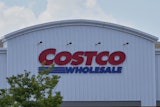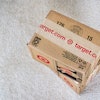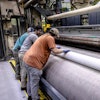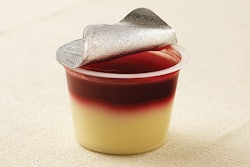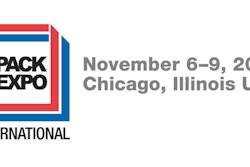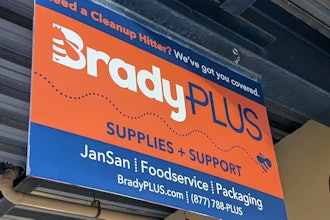Over the course of the two weeks leading up to PACK EXPO International 2016, Food Manufacturing is publishing a number of pieces of show preview content. We had the opportunity to connect with several companies exhibiting at the annual event for a quick look at topics and trends in their segment of the food and beverage industry, along with a preview of what products/technologies those companies will have on display at PACK EXPO International.
In this installment, we check in with Mark Lozano, Sales Manager — North America for tna, who discussed topics and trends in food processing and food packaging, and highlights what the company will have on display at booth S-2882.
Q. What are some emerging topics and trends in food processing and food packaging?
A. A key trend currently driving innovation across the food manufacturing industry — and in particular the snacks sector — is an increased consumer demand for more variety. Whether it’s novel ingredients, exotic flavor combinations, added spice or interesting textures, today’s consumers expect a lot more from their snacking experience. This trend is putting quite a bit of pressure on food manufacturers as it means they’ll need to run a range of flavors, bag sizes, formats and materials on one line. To increase their product portfolio cost effectively, food manufacturers are looking for more flexibility in their existing production lines to be able to customize their offering quickly and easily. For example, a manufacturer looking to add a new flavor to their product range will require a system that allows products and flavors to be changed over quickly, outputs to be adjusted according to demand and oil spray and seasoning levels to be regulated in an instant. On-machine seasoning (OMS) systems often provide the greatest level of production flexibility from a control perspective as several flavors can be produced at once. At the same time, VFFS packaging systems that don’t require any mechanical adjustments when changing product or film, and allow for quick former changes and any combination of jaw configuration, provide food manufacturers with full flexibility of bag size and format, film type and application on a single system.
Consumers are also becoming more health conscious and increasingly aware of the content of the food they eat and how it’s processed. A lot of food manufacturers are catering to this demand by reducing the amount of fat in their products or by incorporating alternative ingredients and raw materials like banana, kiwi, kale or coconut oil, for example. One of the latest technologies that can help manufacturers create snacks that not only look and taste great, but also are “better for you” is vacuum frying. With this innovative frying technology, manufacturers are able to produce chips from fruit and vegetables that are high in natural sugars — such as beets, carrots, kiwifruit or mango — by continuously cooking products under low-temperature and low-pressure conditions. At these low temperatures, temperature-related reactions, such as acrylamide formation, are slowed down significantly and in some cases do not occur. At the same time, the degradation of the product’s surface structure is reduced, lowering the amount of oil absorbed and therefore enabling significant fat reduction with minimal impact on product quality, including taste and texture.
In addition to this, we continue to see more and more consumers opting for smaller, snack-size bags as they look to control their portions and monitor calorie intake. This has an effect on the packaging speeds of production lines, as manufacturers need to package the same amount of product in more bags to retain their production volumes. As a result, we now see packaging systems that can potentially handle up to 250 bags per minute, which is a massive step up in terms of throughput.
Furthermore, as consumers become more environmentally aware, manufacturers aim to take a greener approach to improve the environmental credentials of their products. Packaging specialists, in particular, have noted this development and are stepping up to supply environmentally friendly systems that reduce waste and contribute to a more sustainable production process. This trend has also influenced the introduction of more controls technology to help manufacturers monitor energy usage, reduce waste and prevent unwanted emissions across their production lines, while ensuring high levels of productivity.
Q. What are some of the current challenges in the food processing and packaging industry?
A. Increased operating efficiency has become a top priority for the majority of manufacturers. However, when operating at speeds of over 150 bags per minute it’s not just about achieving faster throughputs, but also about product quality. In particular, fragile products like potato chips need to be handled with the utmost care. Failing to consider this can have costly consequences, especially in terms of wastage and customer loyalty. Striking a balance between packaging speeds and product quality is therefore no longer just something to strive for, but has become a necessity for food manufacturers wanting to survive in a highly competitive market.
An increased emphasis on automation and system integration across the entire production line can help manufacturers get the balance right as it optimizes throughput rates, eliminates human error and reduces costs. By integrating intelligent control systems, manufacturers can benefit from one single point of control, increasing production transparency, boosting line efficiency and enhancing overall performance. The latest technological advancements in this area have resulted in the development of intuitively designed systems powered by self-learning software, enabling VFFS machines to strike a balance between advanced packaging speeds, low waste, and high product quality.
Many manufacturers also undervalue the importance of taking a step back and looking at the complete line. While it’s easy to spend an entire budget on the latest state-of-the-art technology, it’s not always guaranteed that that combination will necessarily bring the best results. After all, the speed at which the bagger can operate is also influenced by the speed of the other components that make up the line. For example, a bagger may be able to pack bags of potato chips at a rate of 150 bags per minute, but if the scale can only handle 80 weighs per minute, then the overall productivity will be reduced. Manufacturers must ensure that all elements of the production line can achieve similar levels of outputs to boost their overall efficiency. By specifying complete turnkey systems from one supplier, manufacturers can be sure that each component works in perfect synergy with the other, delivering the best results possible.
Q. What products/technologies/solutions will tna be exhibiting at PACK EXPO International 2016?
A. At Pack Expo this year, we will present our whole range of turnkey solutions, including some of the most advanced food processing and packaging technologies. Alongside live demonstrations of our turnkey capabilities, for the first time visitors to our booth will also be able to discover how the flexible inserting and labeling equipment from our latest acquisition — Unique Solutions — can add extra value to their packaged products.
Added value will be a key differentiator for many food manufacturers, in particular in the US — one of the most dynamic and competitive markets in the world. While there’s a lot of room for product innovation and creativity, not all food manufacturers are able to regularly launch new products to make a splash in such a saturated market. With our flexible labeling and inserting technology, however, manufacturers can now add immense value to their existing product range. Whether it’s a small toy in a bag of candy or a seasoning sachet to add some extra spice, the possibilities to stand out on those crowded supermarket shelves are practically endless.
Besides on-stand product demonstrations of our most innovative technology, including the tna robag FX 3ci, tna intelli-flav OMS 5, tna roflo HM 3, tna roflo VM 3 and FOODesign cryo-jet 5, visitors will also be able to experience tna’s complete range of turnkey processing and packaging solutions in 3D through the tna innovation station — a fully interactive experience in which attendees can learn about individual pieces of equipment, zoom in and view specific product information and watch detailed product videos.
About tna
tna is a leading global supplier of integrated food processing and packaging solutions with over 14,000 systems installed across more than 120 countries. The company provides a comprehensive range of products including materials handling, processing, cooling and freezing, coating, distribution, seasoning, weighing, packaging, inserting and labeling, metal detection and verification solutions. tna also offers a variety of production line controls integration & SCADA reporting options, project management and training. tna’s unique combination of innovative technologies, extensive project management experience and 24/7 global support ensures customers achieve faster, more reliable and flexible food products at the lowest cost of ownership.
